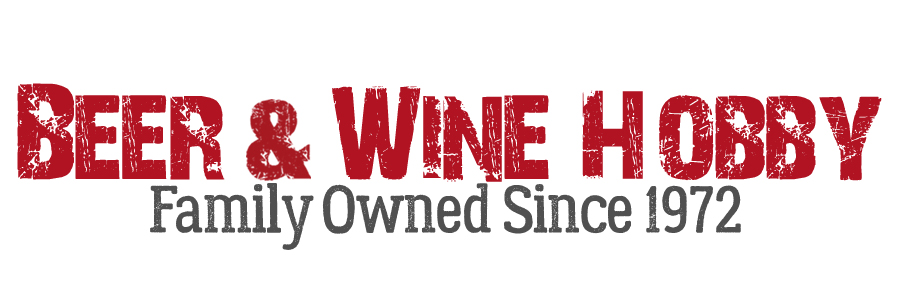Chilean Winemaking From Fresh Grapes
1. Order (4) 18 lb. boxes of grapes for every 5 gallons of wine (general guideline). Your primary fermenter should be filled only about 2/3 full to allow for expansion during fermentation.
2. Important – Southern Hemisphere grapes have been heavily sulfited. When opening these boxes be sure to smell the grapes. If high sulfur content is still present, remove grapes and wash and air dry grapes prior to crushing.
3. Prepare yeast starter (see instructions on back of page) 1-2 days prior to beginning fermentation. (Optional) or Use (1) package of quality wine yeast and 1/2oz Yeast Nutrient for every (4) cases of grapes to ensure a vigorous and clean fermentation.
Note: We do not recommend using Montrachet, Pasteur Red or GRE wine yeast due to the high risk of hydrogen sulfite, with Chilean grapes. Total volume prepared should be 3-5% of the anticipated volume of must.
4. Crush grapes into primary, and test for sugar and acid content. Adjust (if necessary) to 0.65% acid by adding acid blend or water, and a specific gravity of 1.095 by adding sugar or water if necessary. Remove 80-90% of the stems (some should remain to contribute tannin).
5. Add 1 ounce of potassium metabisulphite for each 350 lbs. (~20 boxes) of grape. Stir into must.
*Note: All must adjustments should have been made by this time. If using pectic enzyme to increase juice extraction or Lallyzyme EX or OptiRED to improve color intensity add at this time.
6. After 24 hours, check temperature of must. Adjust to 70-80°F. Add yeast and yeast nutrient. Cover fermenter with a plastic cover.
7. Stir must twice daily, breaking cap. This helps extract the color from the skins, and also reduces the risk of spoilage. Keep the temperature of the must to about 75°F. Do not stir the wine 12 hours before racking.
8. When the wine has the color and body desired, rack the free run (the juice produced without pressing) to secondary. Color guidelines are:
- 12 hour fermentation: deep rose color
- 48 hour fermentation: light red wine
- 3 day fermentation: medium colored red wine
- 5-6 day fermentation: deep red wine, like Chianti
Your hydrometer will also guide you. When the specific gravity has fallen to about 1.045, the wine will be about a medium colored wine.
9. If you are not making a second-run wine, press the grapes at this time to extract all the wine. Press lightly, if at all, if making a second run.
10. Fill the secondary fermenter about 1/2 full. Attach a stopper and lock and continue to ferment. Ferment the remainder of the wine in carboys or other glass fermenters and use for topping up.
11. Rack (1) day after pressing to remove sediment and avoid the possible build-up of hydrogen sulfite.
12. Rack again in 10-12 days, to rack off the heavy sediment. Reattach locks. When fermentation becomes quiet and slow, top up to within 1” of stopper or bung.
13. In approximately 3 weeks, when fermentation is complete, a Malolactic culture may be introduced if desired.
14. In 1 – 2 months when malolactic fermentation is complete, rack and sulfite with 50 parts per million of potassium sulphite (Use Titrets Kit or Accuvin Malic Acid test kit to check that malolactic fermentation is complete). Top up.
15. If oak is desired, add at this time. Let sit for 6 weeks or until desired oak is accomplished; then rack, stabilize, and proceed to bottle (ensure that you have 75 – 80 PPM sulfite) or continue aging. (Check free SO2 with Accuvin Free SO2 Quick Test Kit or Titrets Test Kit.)
16. Filtering prior to bottling will enhance the wine.
Second-run (or false) wine
1. Take the pomace from Step 9, either keep or return it to the primary fermenter. Add the same volume of water as wine drawn off. Also add (per gallon of water):
- 2 lbs. sugar
- 3 teaspoons acid blend
- 1 teaspoon yeast nutrient
- ¼ teaspoon tannin
Yeast does not need to be added as the pulp still has plenty, so more is not needed.
2. Stir twice daily for 5-7 days, again breaking up cap.
3. When the specific gravity has fallen to 1.020-1.010, siphon to secondary, and proceed as for first run wine. After bottling, this wine will age faster, and therefore may be enjoyed sooner than the first wine.
4. Yield will be 50% (or ½) of the first-run wine.
Yeast Starter Instructions
Bring 1 cup of orange juice and 3 cups of water to boil. Cool, add 2 tablespoons of sugar, and 1 teaspoon of yeast nutrient. Put into starter bottle, add yeast, and attach fermentation lock. Activate for 1-2 days. Add to must.
Sufficient for 10 gallons.
